Understanding Parkinson's Disease
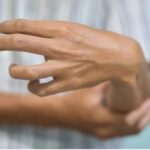
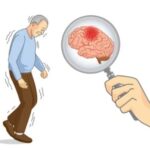

Parkinson’s disease is a Neurodegenerative disorder which is progressive, long-term and mainly affects movements in the patient. It happens because the brain’s nerve cells in Substantia Nigra that produce a chemical which is known as dopamine start to die or become impaired.
Dopamine helps to control smooth and coordinated muscle movement in the body, but when dopamine starts getting low, one can face motor symptoms such as tremors, slowness, unbalancing in body, stiffness, etc. Symptoms of Parkinson’s disease start slowly, Initial symptoms are hardly noticeable and gradually it increases.
Role of Dopamine in the body
Dopamine is a super important chemical messenger (called a neurotransmitter) in your body, and it plays several key roles:
Movement control:
In areas of the brain like the basal ganglia, dopamine helps coordinate smooth, purposeful movement. A lack of dopamine (like in Parkinson’s disease) leads to stiffness, tremors, and slow movements.
Mood and motivation:
Dopamine is often called the “feel-good” neurotransmitter. It IS’s heavily involved in reward, pleasure, and motivation. When you achieve something or enjoy something, your brain releases dopamine.
Learning and memory:
Dopamine helps with learning new information and forming memories, especially when there’s a reward involved.
Treatment of Parkinson’s Disease
Parkinson’s disease is a long-term condition that affects movement due to a decrease in dopamine levels in the brain. While there is no cure yet, many treatments can help control symptoms and improve quality of life.
Medicines for Parkinson’s Disease
In the early stages, most people find relief with medications. These drugs either increase dopamine levels or help the brain use it better. The most commonly used medicine is Levodopa, which gets converted into dopamine in the brain. Other medicines, like Dopamine agonists and MAO-B inhibitors, can also help.
The choice and dose of medicine vary for each person. Doctors consider age, symptom severity, and other health issues before deciding on the best treatment.
When Surgery is Needed?
As the disease progresses, medicines might not work as well or may cause side effects. In such cases, doctors may suggest Deep Brain Stimulation (DBS) — a surgical treatment that helps control movement by sending signals to specific parts of the brain.
Important to Know
Medicines help manage symptoms but do not cure the disease.
Treatment needs regular adjustment based on how the patient responds.
A neurologist or neurosurgeon will guide the treatment plan.
Brain Changes (Neuropathology):
There was no specific etiology for Parkinson’s disease. When nerve cells die in substantia nigra which is part of our brain. These nerve cells are responsible for producing dopamine. Dopamine is a chemical which works as a messenger between part of our brain and nervous system which aids to control & majorly co-ordinate one person’s body movement. If these nerve cells die, production of dopamine is also less, so as a result brain controlling movement will not work like a normal person, movements of the person will become slow and abnormal. These nerve cell damage is a slow process, so symptoms of disease begin slowly.
Genetic Factors: Some cases of Parkinson’s are linked to inherited gene mutations (e.g., SNCA, LRRK2, PARK7, PINK1, and PRKN). However, purely genetic Parkinson’s is relatively rare — about 10-15% of cases.
Environmental Triggers: Exposure to certain toxins (like pesticides or herbicides) can increase the risk. Rural living and well water consumption have also been associated with higher rates.
Age: Parkinson’s is much more common as people get older, typically developing after age 60.
Oxidative Stress and Mitochondrial Dysfunction: Damage from free radicals and impaired energy production in brain cells might contribute to neuron death.
Inflammation: Chronic inflammation in the brain (neuroinflammation) could play a role in the progression of the disease.
Head Trauma: Some studies link repeated head injuries (like concussions) to an increased Parkinson’s risk.
Symptoms of Parkinson’s Disease
Motor Symptoms (movement-related) for Parkinson's Disease
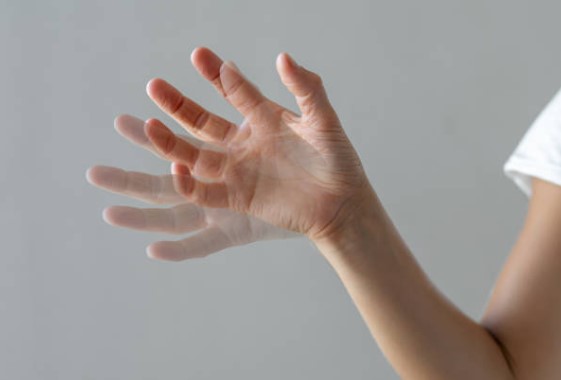
Tremor: Shaking, usually starting in the hands or fingers (often a “resting tremor”).
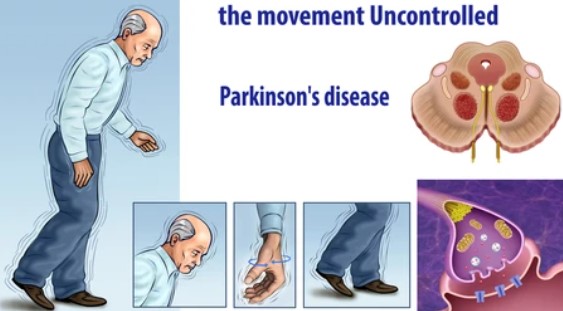
Bradykinesia: Slowness of movement, making everyday tasks harder and slower.
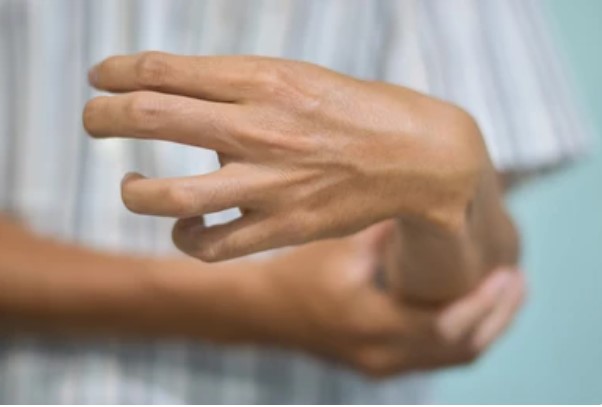
Muscle Rigidity: Stiffness in the limbs or trunk that can cause pain and limit range of motion.

Postural Instability: Trouble with balance and coordination, leading to falls.

Freezing of Gait: Sudden, brief inability to move the feet, as if “glued” to the floor.

Shuffling Gait: Small, dragging steps when walking.
Non-Motor Symptoms (non-movement) for Parknson's Disease

Depression and Anxiety: Common mood changes.

Cognitive Changes: Slowed thinking, memory problems, or later dementia.
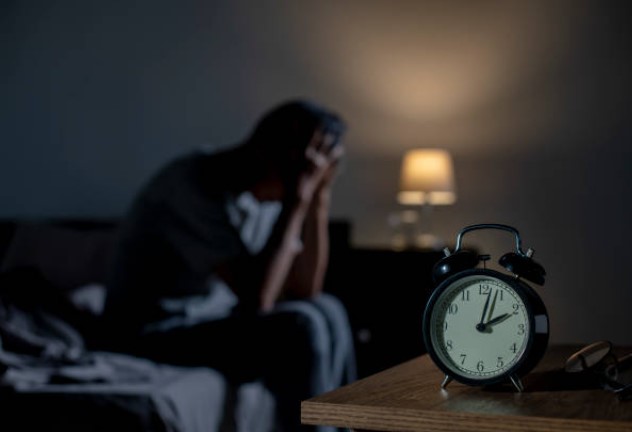
Sleep Disturbances: Insomnia, vivid dreams, or acting out dreams (REM sleep behavior disorder).

Fatigue: Persistent tiredness not relieved by rest.

Speech and Writing Changes: Soft speech (hypophonia) or small, cramped handwriting (micrographia).

Loss of Sense of Smell: Often an early sign, even before movement symptoms.
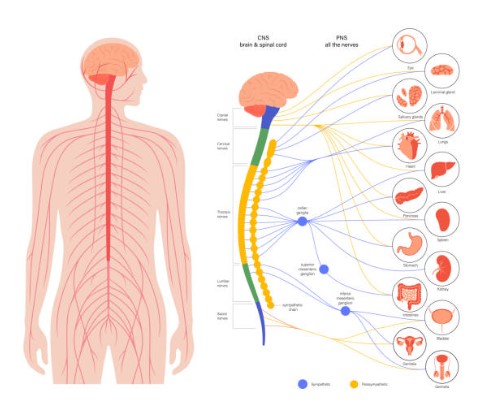
Autonomic Dysfunction: Issues like constipation, low blood pressure when standing (orthostatic hypotension), and bladder problems.
Levodopa:
- It is a prodrug which converted into dopamine by AADC ( Aromatic Aminoacid Decarboxylase or Dopa decarboxylase)
- Levodopa should be taken at least 30 mins before food or 2 hours after food.
- Side-effects, very poor access to the brain, Nausea, Gastritis, hallucinations and hypotension.
- To avoid these side-effects Levodopa is always combined with Carbidopa or anti-vomiting medicines.
- If side-effects are seen, go slow in increasing the dosage of medicines.
Dopamine agonist, like Pramipexole, Ropinarole, they can be available in different names but the generic name is always as above. These are given by the doctors mainly in the beginning of the disease or as add-on therapy with Levodopa, depending upon the treating doctors philosophy.
- These drugs can be safely taken with food.
- Common side-effects are, Hallucinations, Hypersexuality, Behavioural issues.
Trihexyphenidyl hydrochloride (Pacitane), is a drug which is especially taken in tremor (shaking) dominant Parkinson’s disease. This should not be used in patients above 60 years and patients with memory issues. Its side-effects could be Sedation, confusion, Urinary difficulty, constipation, cycloplegia, photophobia, dryness of mouth
Similarly, Amantamine is another drug which is commonly used to support the management of Parkinson’s disease, its side-effects could be swelling in legs, discolouration of urine, dizziness or lethargy.
Other drugs, are like Xafinect, Rasalact. These are the additional drugs used to treat Parkinson’s disease. The whole knowledge about these medicines should be provided by your treating doctor as per your needs.
In cases of side-effects due to any medicine, patients should contact their Doctors.
When a person takes Levodopa, it is absorbed into the bloodstream and travels to the brain, where it is converted into dopamine. This increase in dopamine helps the brain send proper signals to the muscles, improving movement and coordination.
However, enzymes in the blood can break down Levodopa before it reaches the brain, reducing its effectiveness. To overcome this, Levodopa is often combined with Carbidopa, a medication that inhibits the enzymes that break down Levodopa outside the brain. Carbidopa allows more Levodopa to reach the brain and also helps reduce side effects such as nausea,
Caregivers and patients have observed that Levodopa significantly reduces symptoms like bradykinesia (slowness of movement), muscle stiffness, and rigidity and is less effective in reducing tremor, and very less effective in relieving problems with balance.
If symptoms still not well controlled with medication, or patient getting side-effects of that drugs, There is an option of a surgical intervention called as Deep Brain Stimulation (DBS) is there, which can help to prolong the good effect of Levodopa therapy throughout the day and hence relieve most of the symptoms without causing unnecessary side-effects.
Treatment of non-motor symptoms of Parkinson’s Disease
Various non-motor complaints in PD patients and their management are as follows:
- Depressive thoughts: BZDs, SSRI, SNRI, TCA
- Excessive drooling of saliva: atropine, glycopyrolate
- Nausea/vomiting: ondensetrone
- Constipation: Pruvict, polyethylene glycol
- Memory disturbances: Rivastigmine, Donepizil
- Hallucinations/Psychosis: clozapine, quitiapine, Pimavanserin
- Sleeping issues: clonazepam, Amitriptyline, Mirtazapine
- Daytime sleepiness: memantine, modafil
- Orthostatic hypotension: fludrocortisone, pyridostigmine
- Urinary complaints: mirabegron, solifenacin, silodosin, tamsulosin
Where Can I Go To Provide A Sample For Testing?
Lorem ipsum dolor sit amet, consectetur adipiscing elit. Ut elit tellus, luctus nec ullamcorper mattis, pulvinar dapibus leo.
What happens to my sample once I have provided it?
Lorem ipsum dolor sit amet, consectetur adipiscing elit. Ut elit tellus, luctus nec ullamcorper mattis, pulvinar dapibus leo.
What will laboratory testing cost me?
Lorem ipsum dolor sit amet, consectetur adipiscing elit. Ut elit tellus, luctus nec ullamcorper mattis, pulvinar dapibus leo.
Using Innovative Technology
Lorem ipsum dolor sit amet, consectetur adipiscing elit. Ut elit tellus, luctus nec ullamcorper mattis, pulvinar dapibus leo.